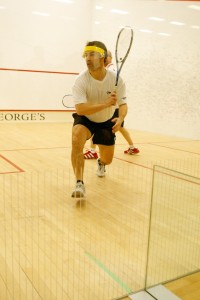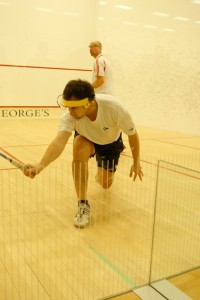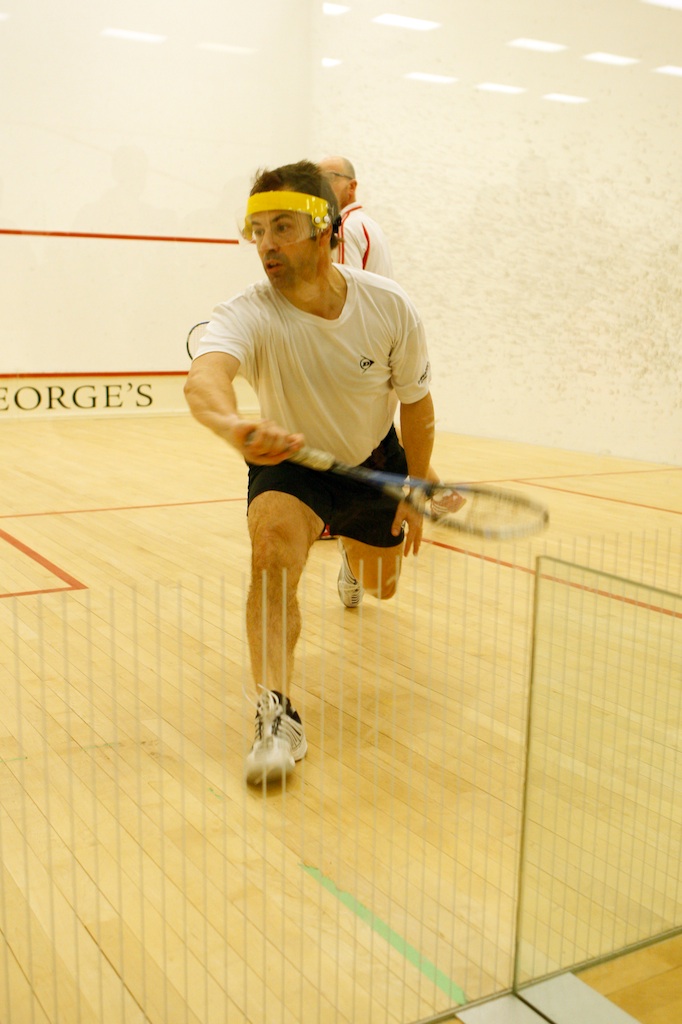By Richard Millman, Director of Squash, Kiawah Island Club
One of the most enjoyable aspects of the Nationals (now known as the US Masters) is the camaraderie and lively discussions that ensue as all of us, enthusiastic students of the game no matter what our age, talk about this nuance or that, be it technical, tactical, physical or mental.

This year I played quite well and with the encouragement of my dear wife and coach Pat, I managed to execute my game plan fairly well.
But on several occasions when I finished a match, one or more players that had been watching, pointedly asked me about shots that I play. “How do you do that?” they asked me. Not purely as a compliment, although I was grateful, but because they really didn’t know and they really wanted to.
This got me to thinking. The basic strokes of the game are widely taught, as is basic movement. But specific skills are not.
There are those that believe certain individuals are simply not capable of executing some of the skills that top players display. While I agree that some skills are difficult, I honestly believe that almost any skill is attainable if you really want it. Of course both you and the coach need bags of patience and the skill must be accurately broken down, explained and built, bit by bit, until the student can first replicate it and then, practice it.
I, therefore, am now focusing on a series of articles about the mechanics of specific skills. If there is one or other skill that you are particularly interested in, please email me at: TheSquashDoctor@yahoo.com and I will endeavor to include it in a forthcoming issue.
For starters I am going to talk about a skill I use that brooked the most curiosity at the Nationals this year: The Float.
What is a Float?
Well it is similar to a lob but it is not a lob. A lob goes up at a steep trajectory and then comes down at a similarly steep trajectory. There are several ways of executing a lob—perhaps a topic in a future piece.
 The Float, however, is a high ball that approximately follows the path of the Out line on the side wall, traveling along more than up and down. Unlike the lob, there is less opportunity for the quick-thinking and quick-acting athlete to suddenly retreat and wait for the ball to come down, because the ball is always traveling along and away from its would-be retriever.
The Float, however, is a high ball that approximately follows the path of the Out line on the side wall, traveling along more than up and down. Unlike the lob, there is less opportunity for the quick-thinking and quick-acting athlete to suddenly retreat and wait for the ball to come down, because the ball is always traveling along and away from its would-be retriever.
The key to the shot is in the late action of the hand/wrist in elevating and catapulting the ball on its way. With a normal swing, with the energy that is generated from the legs and then travels up the torso to the arm, the forearm is pronated and travels past the point of strike without the wrist being promoted forward. Though it is possible to elevate the ball in this manner, the release of the shot is not at all sudden or surprising and is usually slow enough that the precise moment of release and the direction of the shot are obvious to the opponent.
If, however, just prior to the moment of strike, the player stops the movement of the forearm and using the previously described potential that has been generated in the legs, allows the hand/wrist to promote the racquet head through the point of strike, suddenly elevating the ball with little or no apparent swing, the effect is a more sudden release which gives little or no cue to the opponent as to the moment of release.
The opponent is, therefore, late in being able to react and the ball travels perhaps 12 or 15 feet before the opponent is able to respond. This is nothing to do with the power of the shot—purely the late and sudden timing of it in combination with the last minute upward trajectory of the shot.
 Additionally, by employing the hand/wrist to project the ball, rather than the more massive motor skills of the upper arm, the touch receptors in the hand/fingers are far more able to accurately control the placement of the ball.
Additionally, by employing the hand/wrist to project the ball, rather than the more massive motor skills of the upper arm, the touch receptors in the hand/fingers are far more able to accurately control the placement of the ball.
While difficult to describe on the written page, I have successfully taught this skill to relatively inexperienced students, who have moved on to use the Float with great effect.
Try practicing with a warm ball and set yourself up somewhere near the back of the service box. Play an easy ball straight down the line to yourself. Then, with only a small preparation (back lift), wait until the ball is almost past you and, at the last moment, having started the downswing towards the impact point, stop the forearm from following through and instead, promote the racquet head upward through the ball with hand and wrist only and no arm follow through until the contact has been completed.
Good luck and practice hard. Remember Malcolm Gladwell has given us good reason to doubt the existence of genius in his book “Outliers.” Genius may well just be: more than ten thousand repetitions.
As long as you have the technique right in the first place.
Next month: Drop shot mechanics—who says there’s no spin in Squash?





